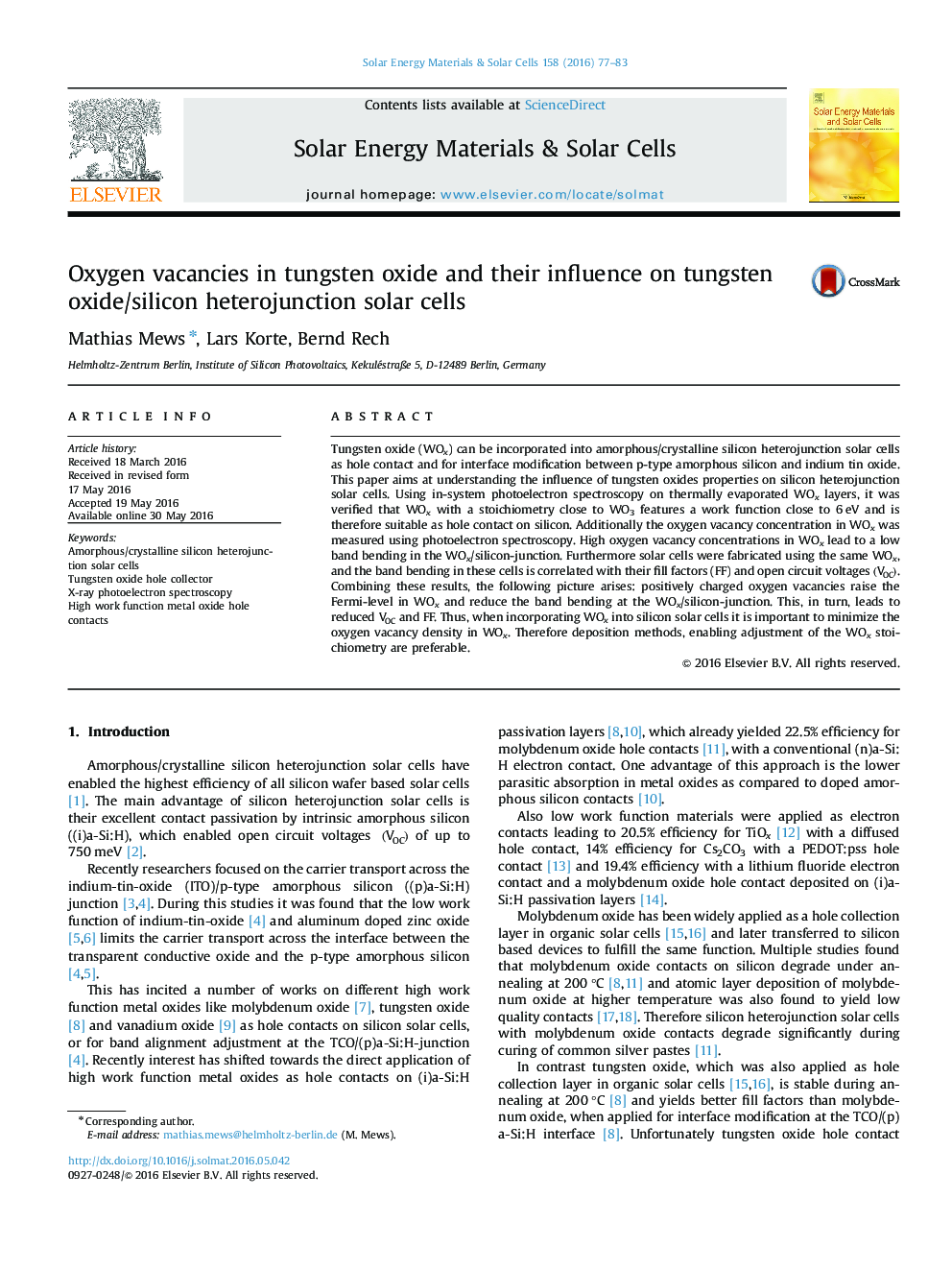| کد مقاله | کد نشریه | سال انتشار | مقاله انگلیسی | نسخه تمام متن |
|---|---|---|---|---|
| 6457425 | 1361708 | 2016 | 7 صفحه PDF | دانلود رایگان |
- Tungsten oxide with a stoichiometry close to tungsten trioxide has a work function of about 6Â eV.
- Thermally evaporated tungsten oxide contains significant densities of oxygen vacancies.
- Oxygen vacancies in tungsten oxide reduce the band bending in the tungsten oxide/silicon junction.
- The reduced band bending leads to weak carrier type selectivity of the junction.
Tungsten oxide (WOx) can be incorporated into amorphous/crystalline silicon heterojunction solar cells as hole contact and for interface modification between p-type amorphous silicon and indium tin oxide. This paper aims at understanding the influence of tungsten oxides properties on silicon heterojunction solar cells. Using in-system photoelectron spectroscopy on thermally evaporated WOx layers, it was verified that WOx with a stoichiometry close to WO3 features a work function close to 6Â eV and is therefore suitable as hole contact on silicon. Additionally the oxygen vacancy concentration in WOx was measured using photoelectron spectroscopy. High oxygen vacancy concentrations in WOx lead to a low band bending in the WOx/silicon-junction. Furthermore solar cells were fabricated using the same WOx, and the band bending in these cells is correlated with their fill factors (FF) and open circuit voltages (VOC). Combining these results, the following picture arises: positively charged oxygen vacancies raise the Fermi-level in WOx and reduce the band bending at the WOx/silicon-junction. This, in turn, leads to reduced VOC and FF. Thus, when incorporating WOx into silicon solar cells it is important to minimize the oxygen vacancy density in WOx. Therefore deposition methods, enabling adjustment of the WOx stoichiometry are preferable.
Journal: Solar Energy Materials and Solar Cells - Volume 158, Part 1, December 2016, Pages 77-83
